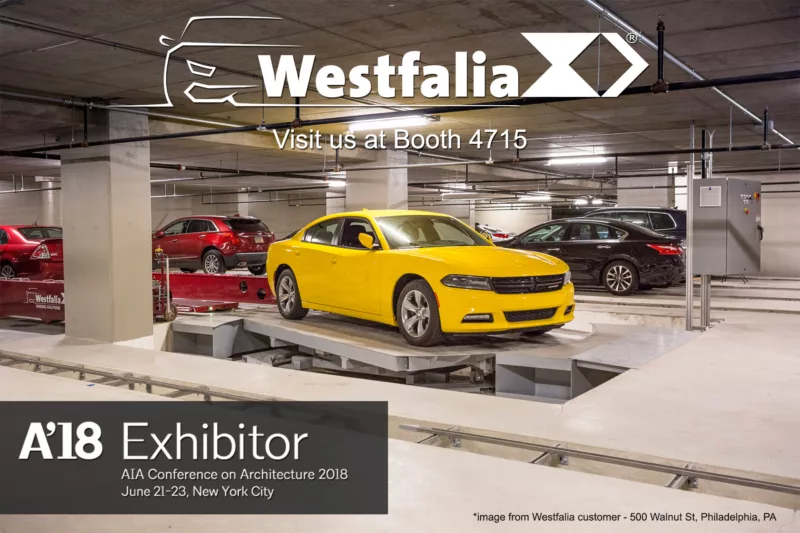
by: Ian Todd, Director of Automated Parking Systems, Westfalia Technologies, Inc.
I recently had the pleasure of attending the American Institute of Architects Conference on Architecture in New York City. This three day conference is the industry’s leading event, bringing together more than 28,000 architects and design professionals from all around the world. This year’s keynote speakers included the notable Sir David Adjaye and Sheela Søgaard, with spotlight speakers such as Sarah Williams Goldhagen, Marc Morial, Roy Spence and many other top talents.
This year’s theme was “Blueprint for Better Cities,” a topic that allowed architects and designers to discuss how to make a difference in cities, large and small, around the world. Topics for sessions and workshops included:
- diversity, equity and inclusion,
- the impact of materials,
- how to reduce energy usage and carbon footprints,
- the importance of resilience, and
- designing with holistic health in mind
As I spoke with architects and other attendees, one challenge that continued to arise was the limitations of small plots in urban areas. Since many of the larger plots in urban areas have already been developed, the development of smaller plots are challenging architects to meet parking requirements—such as Los Angeles County’s two parking space requirement for two bedroom dwellings—with less space. In addition to residential developments, businesses that fail to provide ample parking for customers can deter customers, affecting the bottom line.
As these discussions progressed, I discovered that most architects had not yet heard about palletless automated parking. This unique system provides a solution for architects who are tasked with limited space in urban areas. Since automated parking garages can store more cars with less space than traditional parking garages, it’s a strong alternative to traditional garages and lots.
In fact, 30 to 50 percent more cars can be stored in the same volume of space as a traditional parking garage. Additionally, automated parking structures aren’t confined to strict regulations that limit traditional parking garages, like floor area ratio laws and emissions laws, since they are not intended for people to enter them. Customers will also be more inclined to visit a business if they know that parking is convenient and ample. By using automated parking technology, customers will be assured that they will be able to easily park and that their vehicles are safely stored in a reliable system.
Improving Urban Areas with Space Saving Designs
Throughout the conference, speakers maintained a focus on how to make cities better places, from environmental impact of building materials and how to reduce energy usage, to the importance of designing to improve the life and health of city residents. Attendees aimed to leave the conference with actionable strategies to take back to their own cities to implement on upcoming projects.
Automated parking garages are more sustainable than traditional parking garages, which makes implementing a palletless automated parking garage a great solution for architects striving to improve the environment and health of their cities. Since people do not enter automated garages, the garages can operate in a lights-out environment with less air exchanges, lowering electricity costs and a minimizing the carbon footprint for both the business and the city.
If you are an architect looking for space saving parking solutions, or would simply like to learn more about automated parking solutions, download our white paper, “Saving Space with an Automated Parking Garage,” or reach out to the Westfalia Parking team here.
